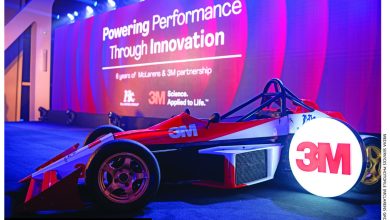IFS
Q: What would be the likely impact of AI driven automation and blockchain for companies?
A: AI will combine with new generation sensors to create a new type of business automation this year. And digital twins will help companies see their businesses anew, with shared simulations that offer security in investment and product development. Furthermore, blockchain will shed its negative perceptions to emerge as an enabler – not a disruptor.
Q: Why do experts predict that AI and IoT will merge to produce a new form of automation?
A: The main reason is that the most advanced and competitive businesses will begin to actively explore new ways of enabling physical devices – be it in their own systems or those of customers – to be empowered by AI driven autonomous capabilities, thereby prompting a permanent and escalating trend.
Q: Do you agree with Gartner’s prediction that at least 40 percent of new application development projects will have AI co-developers by 2022?
A: I believe that we’ll witness the first real life and high impact examples of such automation this year, in enterprise asset management and field service management.
Q: How can digital twins enable companies to reach their potential?
A: Digital twins will reveal exhilarating new panoramas and perspectives for businesses. I believe that they will develop in two stages.
The first stage is the aha moment where businesses see themselves in hyperreal digital precision for the first time. This stage reveals the discrepancy between how businesses actually work and how they think they do. It also provides insights on how the process will work over time.
Meanwhile, the second stage entails simulation leading to action. For CFOs and chief technology officers (CTOs), digital twins reduce risk significantly – through water-tight simulations that fool-proof new investments and product development.
We can also expect asset intensive sectors such as energy and utilities, and fast-moving segments such as logistics and supply chain, to increase their use of digital twins.
Q: Could you elaborate on the changing perceptions vis-à-vis blockchain as a business enabler?
A: The internet first appeared in the early 1960s with the birth of packet switching. Thereafter, a prototype was developed and in operation by the late ’60s, and this was funded by the US Department of Defense.
Often, the most transformative technologies creep up on us from the periphery – and then suddenly they’re there, changing everything. This is also the case when it comes to blockchain.
Technologically, blockchain is already proven. In fact, it’s been with us for a long time. But more cases will come into operation this year as we observe changing perceptions of blockchain.
Q: What do you predict for the next year, given the noticeable switch to blockchain in areas such as supply chain, and food and beverage?
A: Blockchain will free itself from deregulated and doubtful cryptocurrencies. Increasingly, people will view blockchain as a 100 percent trustworthy tool for product verification. In an ever shifting market of automated processes and simulated models, it will deliver indisputable value.
This year will be pivotal for the broader business community to comprehend the nature of blockchain with the number of successful blockchain cases increasing amid a widespread uptake in the three years that follow.
Website www.ifsworld.com







